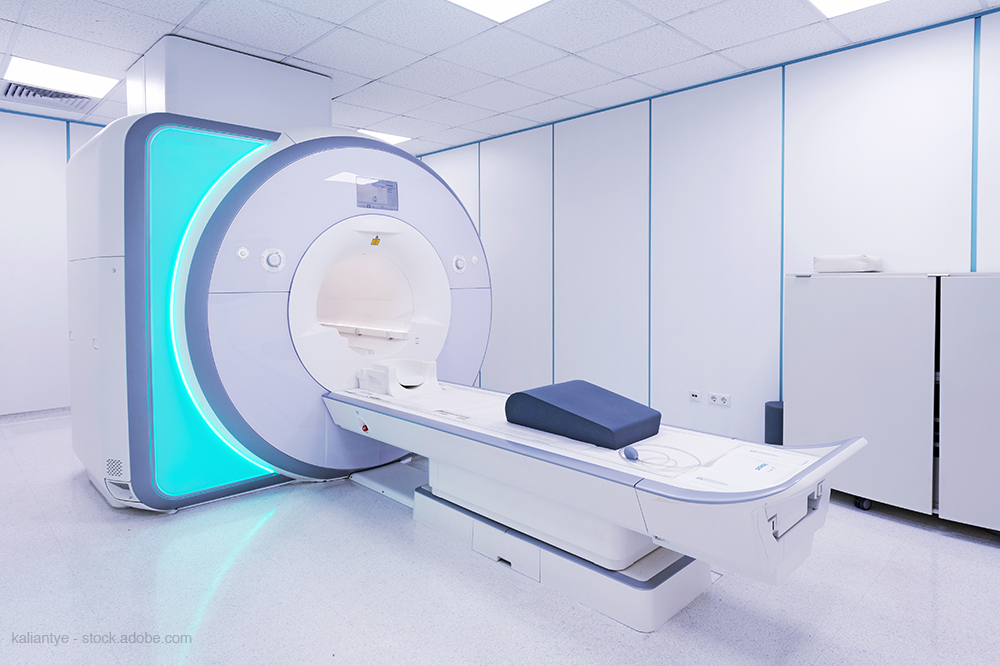Abbreviated MRI Outperforms 3D Mammography with Dense Breasts
Shorter, less-expensive exam identifies more cancers in average-risk women.

Women who have dense breasts and an average risk for breast cancer have a better chance of receiving an accurate breast cancer screening with abbreviated MRI than they do with 3D mammography.
New research published today in Journal of the American Medical Association, conducted by the ECOG-ACRIN Cancer Research Group, reveals the shorter exam was more than twice as effective in pinpointing malignant findings than digital breast tomosynthesis, contributing additional data to the push for adding abbreviated MRI to the available cadre of screening tools.
“When screening women at average risk with dense breasts, we found that abbreviated breast MRI detected significantly more – almost two-and-a-half times as many – breast cancers as 3D mammography,” said lead study author, Christopher E. Comstock, M.D., a diagnostic radiologist with Memorial Sloan Kettering Cancer Center. “We also found that the abbreviated breast MRI was well tolerated by women, with very few side effects.”
This work, he told Diagnostic Imaging, is the first step toward potentially promoting and making this effective evaluation tool accessible to more women.
With this research, Comstock's group focused solely on women of average breast cancer risk with dense breasts because they have a higher risk for developing the disease because it’s easier for cancers to hide. Addressing this problem is critical because more than 40,000 women die annually from breast cancer. Additionally, approximately half of all women over age 40 have dense breast tissue, and mammography offers limited dense breast-screening capability.
While 2D mammography is considered the gold standard of breast cancer screening, MRI actually has the highest breast cancer detection rate. However, it’s also more expensive and can take three times as long – 45 minutes versus 15 minutes. In addition, it requires a contrast injection. Abbreviated MRI truncates the exam time to 10 minutes, reducing complexity and cost. It's important to note, Comstock said, that abbreviated MRI isn't yet covered by insurance, and the average out-of-pocket price tag for the exam hovers around $200-$300.
Pinpointing Efficacy
To determine the efficacy of abbreviated MRI, the research team screened 1,444 women between the ages of 40 and 75 from 47 centers in the United States and one in Germany. Each woman received both a 3D mammogram and abbreviated MRI within 24 hours, and they underwent duplicate exams a year later.
According to study analysis, during the study’s first year, 23 women were diagnosed with breast cancer with abbreviated MRI identifying 22 cancers, including invasive, high-grade disease. Conversely, 3D mammography only detected nine of the 23, all except one of which were also found with abbreviated MRI. The overlooked cancer was early stage. Investigators also found, however, that abbreviated MRI provided slightly more false-positive results, leading to unnecessary biopsies.
But, those additional ductal carcinoma in situ (DCIS) findings don't negate the efficiency of the abbreviated MRI, Comstock said.
"Even though we did find extra DCIS, we also found 10 more invasive cancers than were found with 3D mammography," Comstock explained. "It's hard to argue that's over-diagnosis and that those findings wouldn't have been a problem later on -- particularly the three high-grade cancers."
Challenges
While abbreviated MRI offers several benefits -- shorter scan time, lower cost, and higher sensitivity -- challenges to using it remain both for patients and providers.
For patients, an intravenous contrast dye is still necessary. For some women, it can be uncomfortable, and some can have an allergic reaction. Also, until insurance providers cover the exam, not only will access be limited, but even the out-of-pocket cost can be prohibitive.
Radiologists face an access issue, as well. With several departments frequently sharing MRI machines in facilities nationwide, it could be difficult to get access to a machine to run an abbreviated breast MRI. Consequently, Comstock said, there is movement among vendors within the industry toward lower cost, simplified, dedicated breast MRI units that could greatly extend the exam's availability.
Impact
Even with the existing challenges and higher false-positive rate, abbreviated MRI has the potential to change how the specialty approaches breast cancer screening, he said. Additional cost-analysis research is needed, as are investigations into patient outcomes with abbreviated MRI, but it's possible the shortened scan could shift the paradigm toward an effort to identify invasive cancers even earlier. Future studies must randomize participants to MRI, mammography, and ultrasound to accurately compare outcomes, as well.
"The next steps should be into quantifying not only the impact on mortality, but also doing cost-effectiveness work on how abbreviated MRI compares to current standards," he said. "After that is complete, potentially, this technology could be a stand-alone screening. One could make the argument, do we really need to do mammography?"
Mammography Study Compares False Positives Between AI and Radiologists in DBT Screening
May 8th 2025For DBT breast cancer screening, 47 percent of radiologist-only flagged false positives involved mass presentations whereas 40 percent of AI-only flagged false positive cases involved benign calcifications, according to research presented at the recent American Roentgen Ray Society (ARRS) conference.
MRI Study at ARRS Raises Questions About Disparities in Detection of MASLD
May 3rd 2025New research revealed that Hispanic Americans with evidence of hepatic steatosis on MRI but no formal diagnosis of MASLD had over a fourfold higher risk of developing hepatocellular carcinoma in comparison to those who had a formal diagnosis of MASLD.
FDA Clears MRI-Based AI Segmentation of Organs at Risk During Radiation Therapy
May 2nd 2025Capable of segmenting over 37 organs and structures in the head, neck and pelvis, the MR Contour DL software is currently being showcased at the European Society for Radiotherapy and Oncology (ESTRO) conference.










